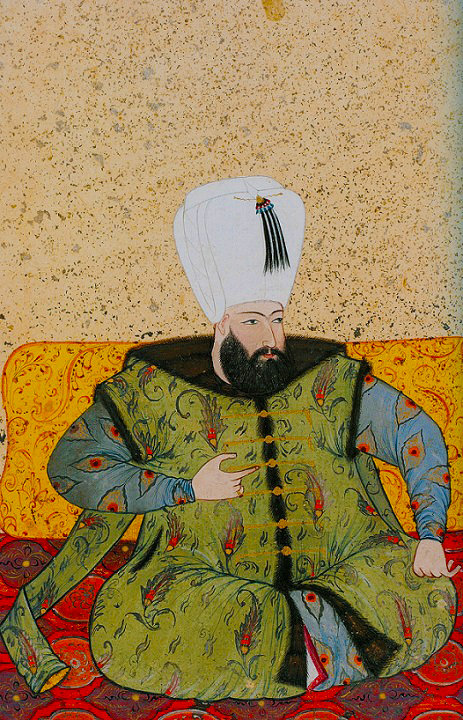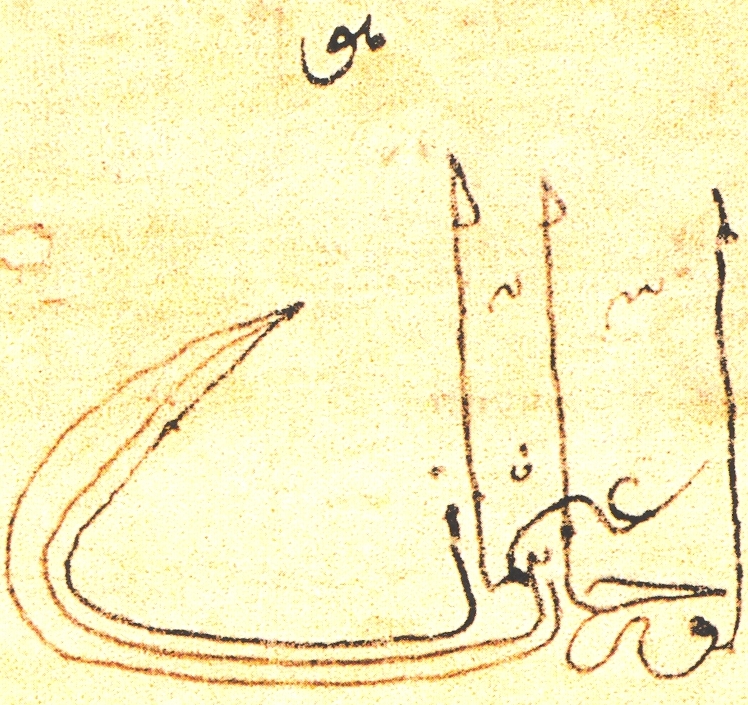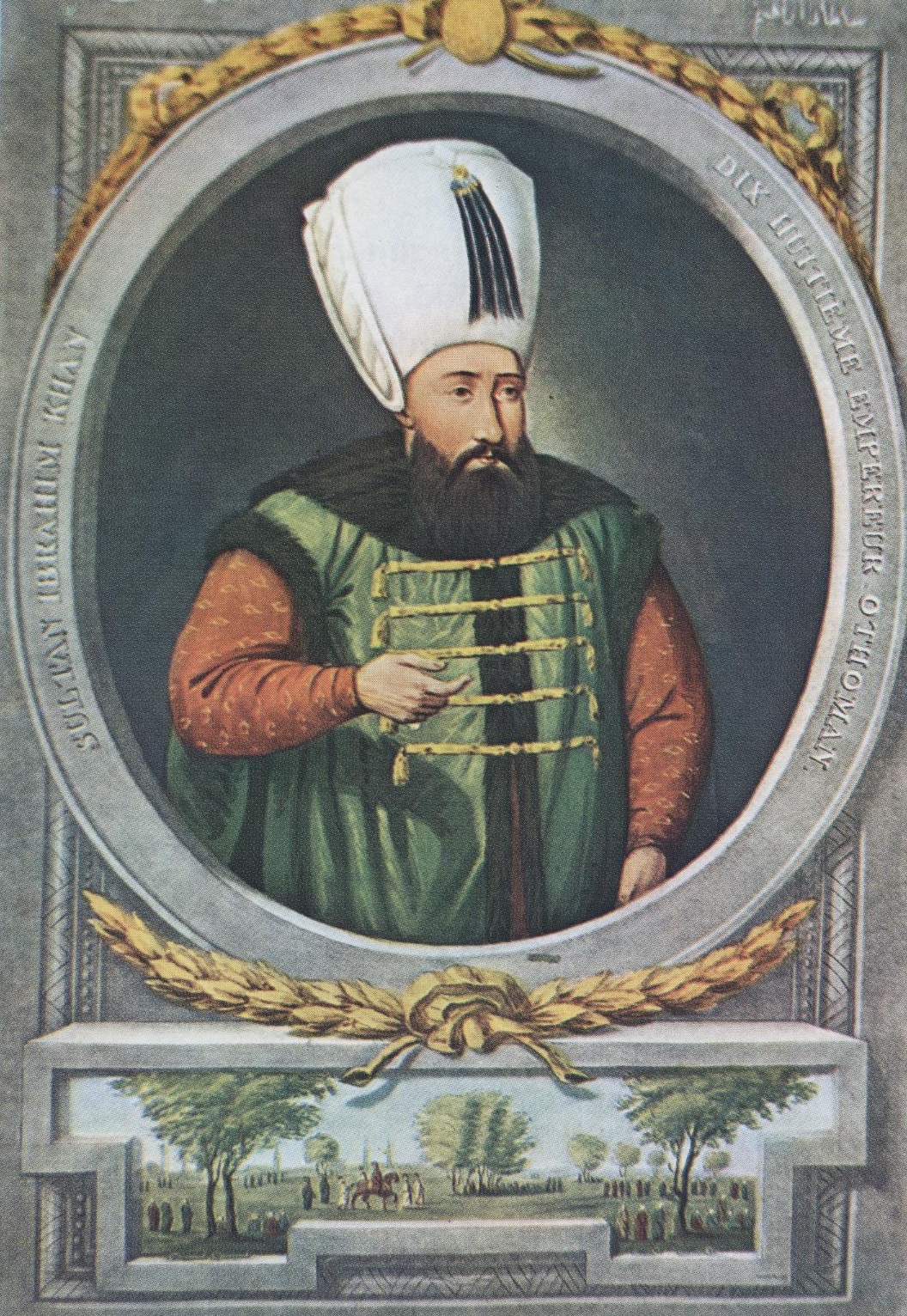|
Ahmed I
Ahmed I ( '; ; 18 April 1590 – 22 November 1617) was the sultan of the Ottoman Empire from 1603 to 1617. Ahmed's reign is noteworthy for marking the first breach in the Ottoman tradition of royal fratricide; henceforth, Ottoman rulers would no longer systematically execute their brothers upon accession to the throne. He is also well known for his construction of the Blue Mosque, one of the most famous mosques in Turkey. Early life Ahmed was born at the Manisa Palace, Manisa, probably on 18 April 1590, when his father Mehmed was still a prince and the governor of the Sanjak of Manisa. His mother was Handan Sultan. After his grandfather Murad III's death in 1595, his father came to Constantinople and ascended the throne as Sultan Mehmed III. Mehmed ordered the execution of his nineteen half brothers. Ahmed's elder brother Şehzade Mahmud was also executed by his father Mehmed on 7 June 1603, just before Mehmed's own death on 22 December 1603. Mahmud was buried along with hi ... [...More Info...] [...Related Items...] OR: [Wikipedia] [Google] [Baidu] |
Handan Sultan
Handan Sultan (; /1568 – 9 November 1605) was a consort of Ottoman Sultan Mehmed III, and mother and Valide Sultan to their son Sultan Ahmed I. She acted as '' de facto'' regent during her tenure from 1603 to 1605. Handan Sultan was one of the prominent women during the era known as the Sultanate of Women and lived during the reign of three ottoman Sultans: Murad III, Mehmed III and Ahmet I. Early life According to the Venetian bailo Francesco Contarini, Handan was of Bosnian origin. She was an enslaved servant in the household of Cerrah Mehmed Pasha, the Beylerbey of the Rumelia Eyalet, and his wife Gevherhan Sultan, daughter of Sultan Selim II, sister of Sultan Murad III, and aunt of Sultan Mehmed III. Mehmed Pasha was a surgeon ("cerrah") and had circumcised Şehzade Mehmed in 1582. In 1583, Prince Mehmed (later Sultan Mehmed III), was appointed the sancak-bey of Saruhan, and as a parting gift, Mehmed Pasha and Gevherhan Sultan, decided to gift Handan, on ... [...More Info...] [...Related Items...] OR: [Wikipedia] [Google] [Baidu] |
Sultan Ahmed Mosque
The Blue Mosque, officially the Sultan Ahmed Mosque (), is an Ottoman-era historical imperial mosque located in Istanbul, Turkey. It was constructed between 1609 and 1617 during the rule of Ahmed I and remains a functioning mosque today. It also attracts a large number of tourists and is one of the most iconic and popular monuments of Ottoman architecture. The mosque has a classical Ottoman layout with a central dome surrounded by four semi-domes over the prayer hall. It is fronted by a large courtyard and flanked by six minarets. On the inside, it is decorated with thousands of Iznik tiles and painted floral motifs in predominantly blue colours, which give the mosque its popular name. The mosque's ''külliye'' (religious complex) includes Ahmed's tomb, a madrasa, and several other buildings in various states of preservation. The mosque was built next to the former Hippodrome and stands across from the Hagia Sophia, another popular tourist site. The Blue Mosque was include ... [...More Info...] [...Related Items...] OR: [Wikipedia] [Google] [Baidu] |
Fatma Sultan (daughter Of Ahmed I)
Fatma Sultan (, "''one who abstains''"; 1606/1607, Topkapi Palace, Constantinople, – 1670,) Constantinople) was an Ottoman princess. She was the daughter of Sultan Ahmed I (r. 1603–1617) and Kösem Sultan, sister of Murad IV (r. 1623–1640) and Ibrahim (r. 1640–1648), and the paternal aunt of Mehmed IV (r. 1648–1687). She is known for her many political marriages. Life The year of her birth has been suggested as 1606 or 1607. She lived in Topkapi Palace until her father's death in 1617, when she had to follow her mother and sisters to Eski Saray. She returned to court in 1623, when her younger brother Murad IV became the new sultan. Marriages The Ottoman princesses were normally married away, to influential Ottoman officials, by their mothers or paternal grandmothers, who had the right to arrange their marriages and arranged matches which could be of political use. They had privileges in marriage which separated them from other Muslim females: such as the right to be ... [...More Info...] [...Related Items...] OR: [Wikipedia] [Google] [Baidu] |
Custodian Of The Two Holy Mosques
His Majesty the Custodian of the Two Holy Mosques (abbreviated as CTHM; ), or Protector of the Two Holy Cities, is a Royal and noble styles, royal style that has been used officially by the King of Saudi Arabia, monarchs of Saudi Arabia since 1986. The title has historically been used by many Muslim rulers in the past, including the Ayyubid dynasty, Ayyubids, the Mamluk Sultanate, Mamluks, the List of sultans of the Ottoman Empire, Ottomans and the Sharifate of Mecca, Sharifain rulers of Hejaz. The title was sometimes regarded to denote the ''de facto'' Caliph of Islam, but it mainly refers to the ruler taking the responsibility of guarding and maintaining the two Holiest sites in Islam, holiest mosques in Islam: Masjid al-Haram, Al-Haram Mosque (, 'The Sacred Mosque') in Mecca and the Prophet's Mosque () in Medina, both of which are in the Hejazi region of Saudi Arabia. The Custodian has been named the most powerful and influential person in Islam and the Sunni branch of Islam by ... [...More Info...] [...Related Items...] OR: [Wikipedia] [Google] [Baidu] |
Murad IV
Murad IV (, ''Murād-ı Rābiʿ''; , 27 July 1612 – 8 February 1640) was the sultan of the Ottoman Empire from 1623 to 1640, known both for restoring the authority of the state and for the brutality of his methods. Murad IV was born in Constantinople, the son of Sultan Ahmed I (r. 1603–17) and Kösem Sultan. He was brought to power by a palace conspiracy when he was just 11 years old, and he succeeded his uncle Mustafa I (r. 1617–18, 1622–23). Until he assumed absolute power on 18 May 1632, the empire was ruled by his mother, Kösem Sultan, as ''nāʾib-i salṭanat'' (regent). His reign is most notable for the Ottoman–Safavid War (1623–1639), Ottoman–Safavid War, of which the Treaty of Zuhab, outcome would partition the Caucasus between the two Imperial powers for around two centuries, while it also roughly laid the foundation for the current Turkey–Iran–Iraq borders. Early life Murad IV was born on 27 July 1612 t ... [...More Info...] [...Related Items...] OR: [Wikipedia] [Google] [Baidu] |
Tughra
A tughra (; ) is a calligraphy, calligraphic monogram, Seal (emblem), seal or signature of a sultan that was affixed to all official documents and correspondence. Inspired by the Tamga, tamgha, it was also carved on his seal and stamped on the coins minted during his reign. Very elaborate decorated versions were created for important documents that were also works of art in the tradition of Ottoman illumination, such as the example of Suleiman the Magnificent in the gallery below. The tughra was designed at the beginning of the sultan's reign and drawn by the court calligrapher or ''nisanci, nişancı'' on written documents. The first tughra examples are from the 14th century. Tughras served a purpose similar to the cartouche in ancient Egypt or the Royal Cypher of British monarchs. Every Ottoman sultan had his own individual tughra. Etymology There are two main schools of thought on the origins of the word tughra. The first sees it derived from a Turkic languages, Turkic secret ... [...More Info...] [...Related Items...] OR: [Wikipedia] [Google] [Baidu] |
Constantinople
Constantinople (#Names of Constantinople, see other names) was a historical city located on the Bosporus that served as the capital of the Roman Empire, Roman, Byzantine Empire, Byzantine, Latin Empire, Latin, and Ottoman Empire, Ottoman empires between its consecration in 330 until 1930, when it was renamed to Istanbul. Initially as New Rome, Constantinople was founded in 324 during the reign of Constantine the Great on the site of the existing settlement of Byzantium, and shortly thereafter in 330 became the capital of the Roman Empire. Following the collapse of the Western Roman Empire in the late 5th century, Constantinople remained the capital of the Eastern Roman Empire (also known as the Byzantine Empire; 330–1204 and 1261–1453), the Latin Empire (1204–1261), and the Ottoman Empire (1453–1922). Following the Turkish War of Independence, the Turkish capital then moved to Ankara. Although the city had been known as Istanbul since 1453, it was officially renamed as Is ... [...More Info...] [...Related Items...] OR: [Wikipedia] [Google] [Baidu] |
Topkapı Palace
The Topkapı Palace (; ), or the Seraglio, is a large museum and library in the east of the Fatih List of districts of Istanbul, district of Istanbul in Turkey. From the 1460s to the completion of Dolmabahçe Palace in 1856, it served as the administrative center of the Ottoman Empire, and was the main residence of its sultans. Construction, ordered by the Sultan Mehmed the Conqueror, began in 1459, six years after the Fall of Constantinople, conquest of Constantinople. Topkapı was originally called the "New Palace" ( or ) to distinguish it from the Eski Saray, Old Palace ( or ) in Beyazıt Square. It was given the name , meaning Cannon Gate, in the 19th century. The complex expanded over the centuries, with major renovations after the 1509 Constantinople earthquake, 1509 earthquake and the 1665 fire. The palace complex consists of four main courtyards and many smaller buildings. Female members of the Sultan's family lived in the harem, and leading state officials, including th ... [...More Info...] [...Related Items...] OR: [Wikipedia] [Google] [Baidu] |
Ottoman Empire
The Ottoman Empire (), also called the Turkish Empire, was an empire, imperial realm that controlled much of Southeast Europe, West Asia, and North Africa from the 14th to early 20th centuries; it also controlled parts of southeastern Central Europe, between the early 16th and early 18th centuries. The empire emerged from a Anatolian beyliks, ''beylik'', or principality, founded in northwestern Anatolia in by the Turkoman (ethnonym), Turkoman tribal leader Osman I. His successors Ottoman wars in Europe, conquered much of Anatolia and expanded into the Balkans by the mid-14th century, transforming their petty kingdom into a transcontinental empire. The Ottomans ended the Byzantine Empire with the Fall of Constantinople, conquest of Constantinople in 1453 by Mehmed II. With its capital at History of Istanbul#Ottoman Empire, Constantinople (modern-day Istanbul) and control over a significant portion of the Mediterranean Basin, the Ottoman Empire was at the centre of interacti ... [...More Info...] [...Related Items...] OR: [Wikipedia] [Google] [Baidu] |
Manisa
Manisa () is a city in Turkey's Aegean Region and the administrative seat of Manisa Province, lying approximately 40 km northeast of the major city of İzmir. The city forms the urban part of the districts Şehzadeler and Yunusemre, with a population of 385,452 in 2022. Modern Manisa is a booming center of industry and services, advantaged by its closeness to the international port city and the regional metropolitan center of İzmir and by its fertile hinterland rich in quantity and variety of agricultural production. In fact, İzmir's proximity also adds a particular dimension to all aspects of life's pace in Manisa in the form of a dense traffic of daily commuters between the two cities, separated as they are by a half-hour drive served by a fine six-lane highway nevertheless requiring attention at all times due to its curves and the rapid ascent (sea-level to more than 500 meters at Sabuncubeli Pass) across Mount Sipylus's mythic scenery. The historic part of Manisa s ... [...More Info...] [...Related Items...] OR: [Wikipedia] [Google] [Baidu] |
Ottoman Dynasty
The Ottoman dynasty () consisted of the members of the imperial House of Osman (), also known as the Ottomans (). According to Ottoman tradition, the family originated from the Kayı tribe branch of the Oghuz Turks, under the leadership of Osman I in northwestern Anatolia in the district of Bilecik, Söğüt. The Ottoman dynasty, named after Osman I, ruled the Ottoman Empire from 1299 to 1922. During much of the Empire's history, the sultan was the absolute regent, head of state, and head of government, though much of the power often shifted to other officials such as the Grand Vizier of the Ottoman Empire, Grand Vizier. During the First Constitutional Era, First (1876–78) and Second Constitutional Eras (1908–20) of the late Empire, a shift to a constitutional monarchy was enacted, with the Grand Vizier taking on a prime ministerial role as head of government and heading an elected General Assembly of the Ottoman Empire, General Assembly. The imperial family was deposed ... [...More Info...] [...Related Items...] OR: [Wikipedia] [Google] [Baidu] |
Ibrahim Of The Ottoman Empire
Ibrahim (; ; ; 13 October 1617 – 18 August 1648) was the sultan of the Ottoman Empire from 1640 until 1648. He was born in Constantinople as the last son of sultan Ahmed I and Kösem Sultan, an ethnic Greek originally named Anastasia. He was called Ibrahim the Mad () due to his mental condition and behavior. However, historian Scott Rank notes that his opponents spread rumors of the sultan's insanity, and some historians suggest he was more incompetent than mad. Early life Ibrahim was born on 13 October 1617 as the last son of Sultan Ahmed I and his Haseki Sultan, Kösem Sultan and when he was merely a month old, his father suddenly died and Ibrahim's uncle Mustafa I became the new sultan. Kösem Sultan and her children, including an infant Ibrahim, were sent to the Old Palace. After his brother Murad IV inherited the throne from his uncle Mustafa I, Ibrahim was confined in the Kafes, which affected his health. Murad had Ibrahim's two surviving half-brothers Şehzade B ... [...More Info...] [...Related Items...] OR: [Wikipedia] [Google] [Baidu] |









